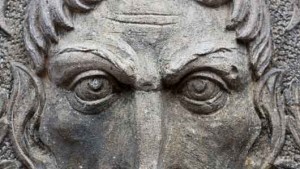Future Fashions from the 1800’s
Eye candy…
Fashions of the Future as Imagined in 1893
(Public Domain Review)
“Illustrations from a delightful piece called the “Future Dictates of Fashion” by W. Cade Gall and published in the January 1893 issue of The Strand magazine. On the premise that a book from a hundred years in the future (published in 1993) called The Past Dictates of Fashion has been inexplicably found in a library, the article proceeds to divulge this book’s contents – namely, a look back at the last century of fashion, which, of course, for the reader in 1893, would be looking forward across the next hundred years into the future. In this imagined future, fashion has become a much respected science (studied in University from the 1950s onwards) and is seen to be “governed by immutable laws”.
The designs themselves have a somewhat unaccountable leaning toward the medieval, or as John Ptak astutely notes, “a weird alien/Buck Rogers/Dr. Seuss/Wizard of Oz quality” to them. If indeed this was a genuine attempt by the author Gall to imagine what the future of fashion might look like, it’s fascinating to see how far off the mark he was, proving yet again how difficult it is to predict future aesthetics. It is also fascinating to see how Gall envisaged the progression of fashions across the decades – considering that, from our perspective now, his vision of 1970 doesn’t much look much different to 1920 – and to see which aspects of his present he wasn’t even able to consider losing to the march of time (e.g. the long length of women’s skirts and the seemingly ubiquitous frill). As is often the case when we come into contact with historic attempts to predict a future which for us is now past, it is like glimpsing into another possible world, a parallel universe that could have been (or which, perhaps, did indeed play out “somewhere”).
(You can read a full transcript of the very entertaining read here at Forgotten Futures or in its original context here on Internet Archive)”
See the rest here.
Share


